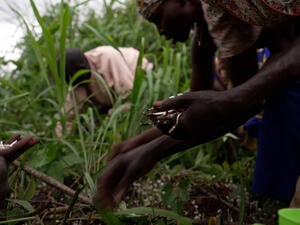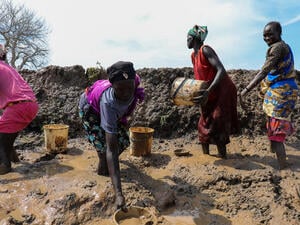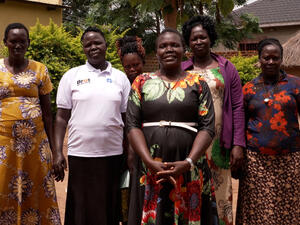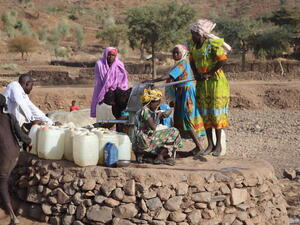UNHCR begins relocation of 50,000 South Sudan refugees in Ethiopia before the rains come
UNHCR begins relocation of 50,000 South Sudan refugees in Ethiopia before the rains come

A Sudanese refugee with her child on one of the buses that moved volunteers from the flood-prone Leitchuor and Nip Nip refugee camps in western Ethiopia.
GAMBELLA, Ethiopia, March 17 (UNHCR) - The UN refugee agency this week began relocating more than 50,000 South Sudanese refugees from flood-prone areas of western Ethiopia ahead of the start of the rainy season in late April.
The refugees are being moved from the Leitchuor and Nip Nip refugee camps in the Gambella region. Last year, in August, both camps were severely hit by floodwaters during unusually heavy seasonal rains, which caused the Baro River to burst its banks.
The first group of 377 refugees left in a convoy of 11 vehicles with a security escort on Monday. The refugees received high energy biscuits and water as they boarded buses for the 300-kilometre-long journey, which takes about eight hours.
"I'm extremely excited to be relocating to a camp where we won't fear that, come the rainy season, our houses will be flooded again," said one refugee, 26-year-old Nyawour, a mother of two.
More than 51,300 refugees from flood-prone areas in the two camps will be relocated, most of them (about 48,430) from Leitchuor. While the new Pugnido camp, which currently hosts nearly 56,000 South Sudanese refugees, has been extended to receive the refugees from Nip Nip, an additional camp was also opened over the weekend. The new camp, Jewi, is located some 18 kms from the regional capital Gambella and will host the refugees from Leitchuor.
"Our plan is to relocate all willing refugees in a safe and dignified manner," said Angele Djohossou, head of the UNHCR sub-office in Gambella, adding that the strategy also includes the development of projects aimed at ensuring peaceful co-existence between refugees who opt to remain and the host community.
The camps in Leitchuor and Nip Nip were established last year when tens of thousands of South Sudanese fled to Ethiopia's Gambella region, escaping the violence that had erupted in mid-December 2013 in the world's youngest nation. An additional new site is also being developed to accommodate the larger group of refugees from Leitchuor and the first refugees are expected to be transferred to that camp early next month.
Finding the land with the right conditions to set up another refugee camp has been a huge challenge, as several sites that had been identified immediately after last year's rainy season were subsequently declared unsuitable. More land is still needed to accommodate the new arrivals from South Sudan.
UNHCR is undertaking the relocation exercise in collaboration with the Ethiopian government and other organizations, including the International Organization for Migration, which is transporting the refugees.
Some 2 million people have been uprooted by the violence in South Sudan since December 2013. Nearly 1.5 million people are displaced inside the country and more than half a million across the border into neighbouring countries, most of them to Ethiopia.
Ethiopia is Africa's largest refugee-hosting country with more than 670,000 refugees, mainly from Somalia, followed by South Sudan, Sudan and Eritrea. This includes more than 250,000 South Sudanese refugees in the Gambella region, of whom more than 194,000 have arrived since mid-December 2013.
By Sulaiman Momodu in Gambella, Ethiopia








